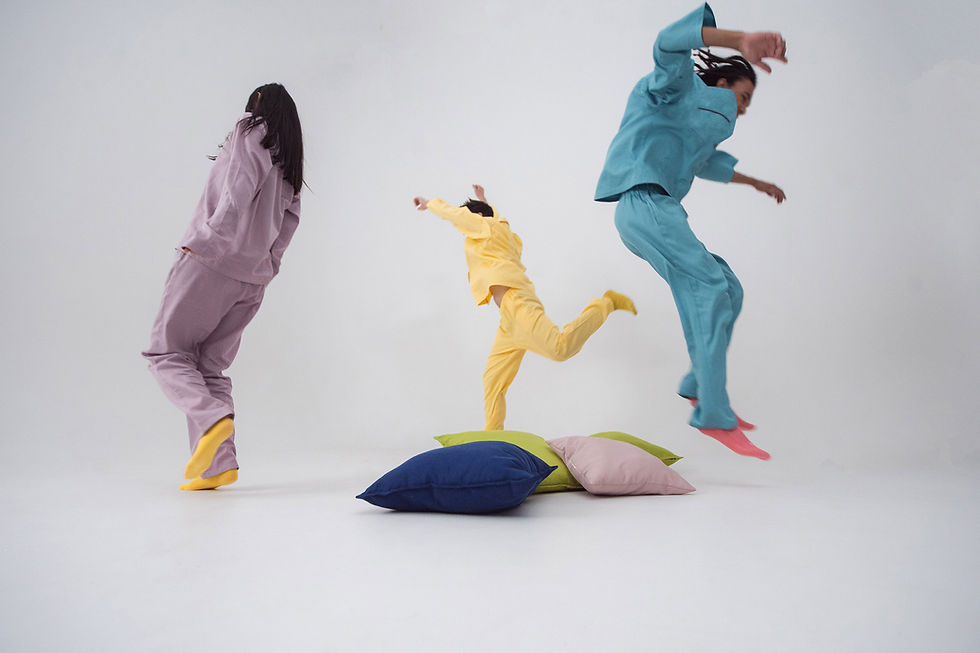History Of Fashion
- NA*PRAWDE®

- Nov 16, 2024
- 4 min read
The history of fashion documents the evolution of clothing styles throughout time, frequently influenced by social or economic shifts. Significant milestones in fashion history encompass:

* Ancient Rome and Egypt: Flowy Garments and colors represented wealth.
Ancient Egypt
- Time Period: c. 3100–30 BCE
- Fashion Details: Clothing was primarily made from linen, which was light and breathable due to the hot climate. Both men and women wore simple kilts and dresses. Wealthy Egyptians adorned themselves with jewelry made from gold and stones, and makeup was common, including kohl around the eyes. Clothing often featured pleats and draping, and hieroglyphics depict various styles.

Ancient Rome
- Time Period: c. 753 BCE–476 CE
- Fashion Details: Roman fashion was characterized by the toga for men and the stola for women. The toga was a symbol of Roman citizenship, while the stola was worn by married women. Fabrics included wool, linen, and silk. Colors and embellishments indicated social status. Romans also popularized the use of sandals and introduced a variety of hairstyles.


* 1700s France: Women wore long-sleeved, layered, ruffled dresses, while men wore knickers and layered tops with ruffles.

700s France
- Time Period: 1700–1799
- Fashion Details: The 18th century saw the rise of elaborate clothing, particularly among the aristocracy. Women wore wide skirts supported by petticoats and corsets, often adorned with lace and ribbons. Men wore fitted coats and waistcoats with breeches. The fashion was heavily influenced by the Rococo style, emphasizing elegance and luxury.
* 1890s France: Haute couture, or structured, over-the-top gowns, became popular.

1890s France
- Time Period: 1890–1899
- Fashion Details: This era is known for the "Belle Époque" period in France. Women's fashion featured hourglass silhouettes achieved through corsets and bustles. Long skirts, high collars, and elaborate hats were popular. Men's fashion included three-piece suits, bowler hats, and canes. The introduction of the sewing machine allowed for more intricate designs.

* 1900s: More gender-neutral options became popular, including flapper dresses, pants for women, and bell-bottoms for men and women.

1900s
- Time Period: 1900–1910
- Fashion Details: The early 1900s continued the Edwardian style, with an emphasis on the S-bend silhouette. Women's clothing featured long, flowing gowns with high necklines and puffed sleeves. Men's fashion remained formal, with tailcoats and waistcoats. The "Gibson Girl" emerged as an iconic representation of the era, symbolizing a new feminine ideal.
* 1970s: Bohemian styles. the-dye, and peach signs became popular.

1970s
- Time Period: 1970–1979
- Fashion Details: The 1970s were marked by diverse styles, including bohemian, disco, and punk. Bell-bottom pants, maxi dresses, and platform shoes were popular among women, while men embraced leisure suits and flamboyant prints. The punk movement introduced leather jackets and ripped jeans, challenging traditional norms in fashion.

* 1980s: Extravagant clothes, bright colors, and patterns became popular.

1980s
- Time Period: 1980–1989
- Fashion Details: The 1980s were defined by bold colors, oversized silhouettes, and extravagant styles. Women wore power suits with shoulder pads, while men sported brightly colored suits and athletic wear. Accessories like big earrings and leg warmers were fashionable. The influence of pop culture icons, such as Madonna and Michael Jackson, played a significant role in shaping styles.
* 1990s: Gruge and a casual punk persona became popular.

1990s
- Time Period: 1990–1999
- Fashion Details: The 1990s were marked by a wide range of styles influenced by various subcultures and the emergence of new fashion trends. Key characteristics included:

Grunge**: This movement, popularized by bands like Nirvana, featured a laid-back aesthetic with flannel shirts, ripped jeans, combat boots, and oversized sweaters. It embraced a casual, anti-fashion attitude.
- Hip-Hop Influence: Baggy clothing, oversized t-shirts, and athletic wear became popular, along with accessories like baseball caps and sneakers. Brands like FUBU and Tommy Hilfiger gained prominence.

- Minimalism: Minimalism emerged as a prominent trend, shifting away from the bold styles of the previous decade to embrace simple, clean lines and muted colors. This trend was characterized by sleek silhouettes and understated elegance.
- Rave Culture: The rave scene influenced fashion with bright colors, neon patterns, and eclectic styles. Pieces like cargo pants, crop tops, and platform shoes were common.
- Feminine Styles: The era also saw a revival of feminine styles, with slip dresses, chokers, and high-waisted jeans becoming popular among women. The "heroin chic" aesthetic highlighted a more androgynous look.
- Influence of TV and Film: Iconic TV shows and movies, such as "Friends" and "Clueless," greatly impacted fashion trends, leading to widespread popularity of certain styles, such as high-waisted jeans and plaid patterns.

* 2022: Gender-neutral options, crop tops, layering jackets, crochet work, and fast fashion became popular.

2022 to Present
- Time Period: 2022–Present
- Fashion Details: Contemporary fashion has become increasingly diverse and inclusive, reflecting a blend of casual and formal styles. Sustainability is a growing concern, leading to a rise in eco-friendly brands. Streetwear, athleisure, and vintage styles are prevalent. Social media influences trends heavily, with fast fashion and digital platforms shaping consumer behavior.
Important Notice
The images shown are for illustrative purposes only. They are purely fictional and do not bear any relation or resemblance to the actual places or individuals they depict.
This clarification indicates that the images displayed are merely for demonstration and do not aim to portray any genuine locations or persons; they are entirely fictional and should not be construed as having any association with reality.




Comments